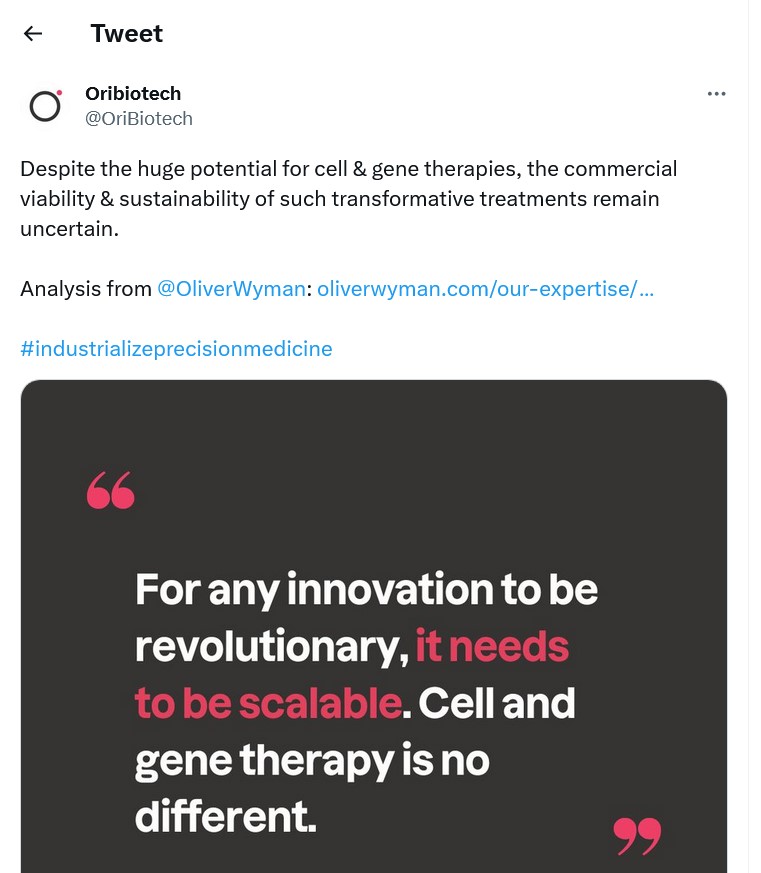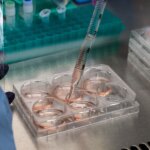How to deliver technological development for faster bioscience

• The speed of bioscience depends on technological development.
• AI and machine learning could improve diagnostic efficiency.
• Bioscience needs tech-forward CIOs to steer its destiny.
Biotech and bioscience are the kind of industries of which great, optimistic, utopian science fiction are made.
Which is a problem.
It’s a problem because according to lots of people working in the field, they should be kind of industries of which great, optimistic, utopian present fact are made.
Scientists are frequently brilliant – it more or less goes with the territory – but, especially in bioscience, they’re often let down by their access to technological developments which most tech organizations give no mind, but just accept as the structural wallpaper of their work.
In Part 1 of this article, we spoke with Bob Burke, EMEA GM at biotech cloud platform Benchling and Jason C. Foster, CEO of cell and gene therapy manufacturing technology company Ori Biotech, both of whom are advocating for a pathway for bioscience that embraces 21st century technological developments like a cloud-based collaborative network.
Technological development and scientific progress.
Such a network, they said, could cut years off the process of getting new gene therapies to patients who desperately need them.
The miraculous insanity of the situation in which many in the bioscience industry find themselves, they said, is that many scientists have no ability to organize or share their data, let alone easily collaborate on it. Hence the need for significant investment in technological development, to speed up collaboration, scientific development, and the achievement of governmental goals (particularly in the UK), like delivering cutting-edge bioscience.
Towards the end of Part 1, Jason casually said:
“We have cures for cancers that patients can’t get access to, because they can’t be made, they can’t be manufactured, they’re too expensive. And a lot of that comes back to the processes that we start with in the lab when we develop these products.”
We boggled at that for a moment. Cures for cancers, as well as gene therapies for other dread conditions the like of which only gene therapies can combat, being held up by the lack of a consistent collaborative cloud?
THQ:
So what you’re saying is that modern technological developments like the cloud and AI would act as a kind of turbo boost button for life-saving or life-altering cures?
JCF:
Yeah, and the speed would, as you say, be genuinely life-saving, because the reality is that the areas where we are seeing AI and machine learning working today are on those edges. You see AI and ML a lot in the world of radiology, right? Something like 20% of all breast cancer goes undetected, because it’s just missed on the mammogram.
But there are places now, countries like Hungary, that are very tech-forward when it comes to cancer detection, where they’re bringing in machine learning to do a second round of evaluation on those scans, and they’re finding things that very hardworking and well-meaning radiologists unfortunately sometimes miss. Those can be life-saving breakthroughs.
It’s critical for the industry. And without the investment in technological development, lives are unfortunately at risk.

The machine learning mammogram? Yes – think of it as a technological safety net.
Technological development delivering data insights.
THQ:
That’s the thing, isn’t it? For all the screaming headlines out there about how they’re going to blow up the world, AI and ML are extremely good at a certain group of activities. And one of those things is the detection of patterns and the detection of anomalies. Which is exactly what you need in things like a mammogram.
JCF:
Yeah, and they’re getting better at more things. The whole concept behind machine learning is that the machine gets smarter as you feed it more structured data. We use similar tools internally at Ori to try and create and understand patterns in data. So I often say the controversial thing – data isn’t valuable.
THQ:
Heathen! Burn the heretic!
JCF:
The information and insights that you derive from data are what’s valuable. I mean, I have tons of unstructured datasets in my filing cabinet at home and pieces of paper that will never see the light of day because I can’t make any sense of it anyway.
But the ability to capture that data in ways like Bob was talking about in Part 1, to structure it, that’s crucial. When you have clean datasets to look at, to analyze, then you can productively say, “Well, what does this data mean?”
And when you say “What does this data mean?,” that’s effectively the question that machine learning and artificial intelligence tools are trying to answer that gives those experts like the radiologists the information they need to make a clinical decision.
“Do I call that person? Do I do a biopsy?” Understanding what the data means is the enabler of better (and faster) clinical decisions. That’s the power of these new tools.
THQ:
Okay – that’s a fairly solid answer to our question of why we need to build technological development and why we need to build a tech culture in order to foster a bioscience culture.
The next obvious question is how we build the kind of tech culture that will support that bioscience culture.
What are we actually aiming to achieve? When are we looking to achieve it by? And how do we get there?
The how of technological development.
BB:
Life sciences organizations have got to prioritize bringing in the right level of leadership at the right stage of the business development to establish this proper technology layer. That’s historically not happened, albeit for understandable reasons.
Biotech organizations have traditionally had limited resources, and as you’d expect, they have to invest in the science first and foremost, so they haven’t spent money on CIOs and information-focused executives, who can then help deliver that really clear technology layer alongside the science to help it do everything that we just talked about it needing to do in order to scale and be innovative and help find life-saving breakthroughs.
So it starts with the people and the leadership of those organizations. And we’re seeing that more now – that’s a trend that’s happening more and more – biotech is bringing in technology leadership at an early stage, to help implement the systems, put the tools and the processes in place, as well as attract the talent that is required to manage those systems, work with vendors, and help drive that innovation at ground level.
It starts organizationally, inside the business, and then goes from there.
Only ever forward.
JCF:
I’d argue, actually, that it starts above the management layer, at the board and investor level. Because when you’re a scientific company, if you’re developing therapies, what your board and your investors have historically cared about is how quickly you can get into the clinical phase, and how quickly you can get clinical data, because that’s an inflection point for the value of that business.
The way that’s manifested itself in cell therapy is that we start off very focused on science, so we’re developing these products in highly manual lab scale processes. We’ve got very experienced people micro-pipetting fluids from one vial to the next. And we’re really focused on hitting that scientific endpoint.
But if we do hit that scientific endpoint, we get into a clinical trial, and we get a good clinical result. But it’s then too late to go back and fix our infrastructure (that is now paper-based, and very slow and not very intelligent), in order to scale it up.
Technological development – the way out of a catch-22?
So when I said that we have cures for cancer that patients can’t get access to, the reason for that is because we haven’t planned on scaling from the very beginning. Because scaling requires a technology infrastructure underneath it to be able to make products with high quality, high throughput and low cost.
What we end up with is low throughput manual processes that are very expensive. So these products are half a million dollars to $4 million per patient – these are expensive products, because they’re very expensive to make, because we haven’t spent the time to put this onto a technology platform that can scale, or to digitize our data from the beginning.
Because ultimately, my investors aren’t telling me to do that. My investors are saying give me clinical data as fast as you can, because that’s what the market cares about. But ultimately, what we end up with is the dead-end situation. We have products that get approved, that ultimately only reach a very, very small percentage of the patient population.

When money and medicine meet, money often talks louder. How can tech soften that influence?
In Europe, something like eight out of 24 of the approved gene therapies that have been approved clinically have been removed from the market, not for political reasons, but for commercial reasons – they couldn’t actually make an ROI case work.
We’ve recently seen one of the big players say they’re not going to bring their product to the UK, because they can’t manufacture it enough, even for the US, and because the reimbursement landscape is a little uncertain, they’re just going to focus on that market.
My fear is that if we don’t fix this problem of technological development, more and more of this could happen, where these products exist, but patients in Europe and the UK can’t access them, because of all of these infrastructure challenges.

Well yes, but can you scale?
We have cures for diseases like multiple myeloma or leukemia lymphoma – we have incredibly effective therapies, but many patients can’t get access to them for these reasons.

Bob Burke and Jason C Foster.
In Part 3 of this article, we’ll take a holistic look at how bioscience, with its as-yet-notional technological development and its tech-forward CIOs could transform the industry into the kind of superpower that, for instance, the UK is depending on.










